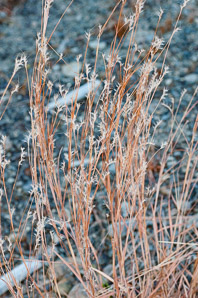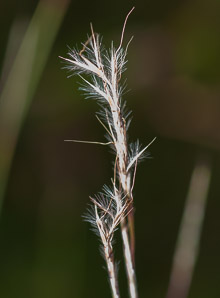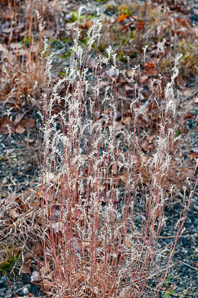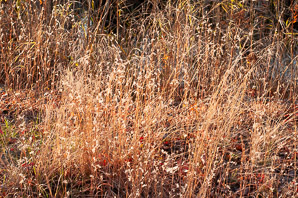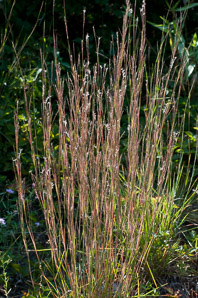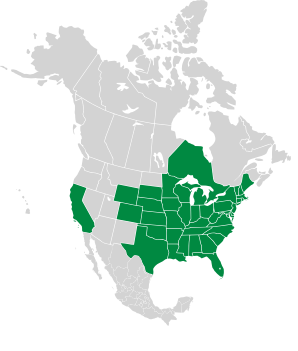
|
Aristida dichotoma Michx. Poverty grass, churchmouse threeawn, Shinners’ three-awned grass
Poverty grass is native to much of North America. Aristida is from the Latin arista, "awn" or "beard," a reference to tiny beardlike tufts; dichotoma means "forked in pairs." Identification: Poverty grass is a bunchgrass that prefers dry, open, often sandy soil. It is branched near the base, 8-16″ (20-40 cm) tall, with short blades about 1/32″ (1 mm) wide. It has two glumes ⅛-¼″ (6-8 mm) long, like miniature corn husks that enclose a central lemma that is ~3/16″ (5-6 mm) long. The lemma is topped by an awn, a pointy spike that is coiled at the base and turned at a right angle. There are two more little awns, 1/32″ (1 mm) long. Online References:
References:
9/5/2010 · Nashua River Rail Trail, near Nashoba Hospital, Ayer, Massachusetts · ≈ 10 × 15″ (26 × 39 cm) 8/20/2010 · Nashua River Rail Trail, Ayer, Massachusetts · ≈ 4 × 6″ (10 × 15 cm)
Aristida dichotoma description by Thomas H. Kent, last updated 25 May 2020. © FloraFinder.org. All rights reserved. |
11/7/2010 · Nashua River Rail Trail, Groton Center, Groton, Massachusetts · ≈ 1 × 2′ (41 × 62 cm) 11/7/2009 · Nashua River Rail Trail, Groton Center, Groton, Massachusetts 8/20/2010 · Nashua River Rail Trail, Ayer, Massachusetts Range:
|
